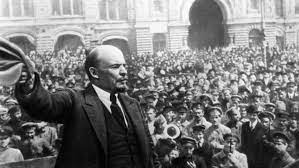The year 1922 marked a critical juncture in the history of the Soviet Union, as the Bolsheviks, led by Vladimir Lenin, grappled with the aftermath of the Russian Revolution of 1917 and the subsequent civil war. This period was characterized by economic challenges, political consolidation, and the establishment of the Union of Soviet Socialist Republics (USSR).
Economic Turmoil: The aftermath of the Russian Revolution left the country in ruins, with its economy devastated by the effects of World War I and the civil war. The Bolsheviks faced the daunting task of rebuilding a shattered nation. In 1921, Lenin introduced the New Economic Policy (NEP), a pragmatic approach allowing limited market mechanisms to revive the economy. This marked a temporary retreat from strict socialist policies, as the state permitted some private enterprise to stimulate agricultural and industrial production.
Political Consolidation: Internally, the Soviet Union faced numerous challenges to its authority. The civil war had pitted the Red Army against various opposition forces, including the White Army, anarchists, and nationalist groups. By 1922, the Red Army emerged victorious, but the country remained politically fragmented. Lenin sought to consolidate power through the formation of the Soviet Union, a federal state comprising republics with a common socialist ideology.
Formation of the USSR: On December 30, 1922, the Treaty on the Creation of the USSR was signed by the Russian Soviet Federative Socialist Republic (RSFSR), the Ukrainian SSR, the Belarusian SSR, and the Transcaucasian SFSR. This treaty laid the foundation for the establishment of the Soviet Union, officially coming into existence on December 30, 1922. The union was initially a voluntary association of socialist republics, but this loose confederation would later give way to a more centralized and authoritarian structure under Joseph Stalin.
Socialist Ideals vs. Economic Realities: While the Bolsheviks were committed to socialist ideals, the economic challenges of the time necessitated pragmatic measures. The NEP allowed for a degree of private enterprise and market forces, a departure from the strict state control advocated by traditional socialist doctrine. This policy shift generated internal debates within the party, highlighting the tension between ideological purity and practical governance.
International Isolation: Externally, the Soviet Union faced isolation from the international community. The Russian Revolution and the subsequent civil war had sparked fear and suspicion among Western powers. The Soviet government’s refusal to honor Tsarist-era debts further strained diplomatic relations. This isolation compelled the Soviet Union to focus on building a self-sufficient socialist state, further shaping its trajectory in the years to come.
Legacy of 1922: The events of 1922 laid the groundwork for the Soviet Union’s future trajectory. The establishment of the USSR brought together diverse ethnic and cultural groups under the banner of socialism. However, the compromises made during this period, particularly with the implementation of the NEP, sowed the seeds for future ideological conflicts within the Communist Party.
In conclusion, the year 1922 was pivotal in shaping the Soviet Union’s identity and trajectory. Faced with economic challenges, political fragmentation, and international isolation, the Bolsheviks navigated a delicate balance between socialist ideals and pragmatic governance. The formation of the USSR marked a crucial step in consolidating power and laying the foundation for the Soviet state, setting the stage for the subsequent decades of the country’s complex history.
newshub



Recent Comments